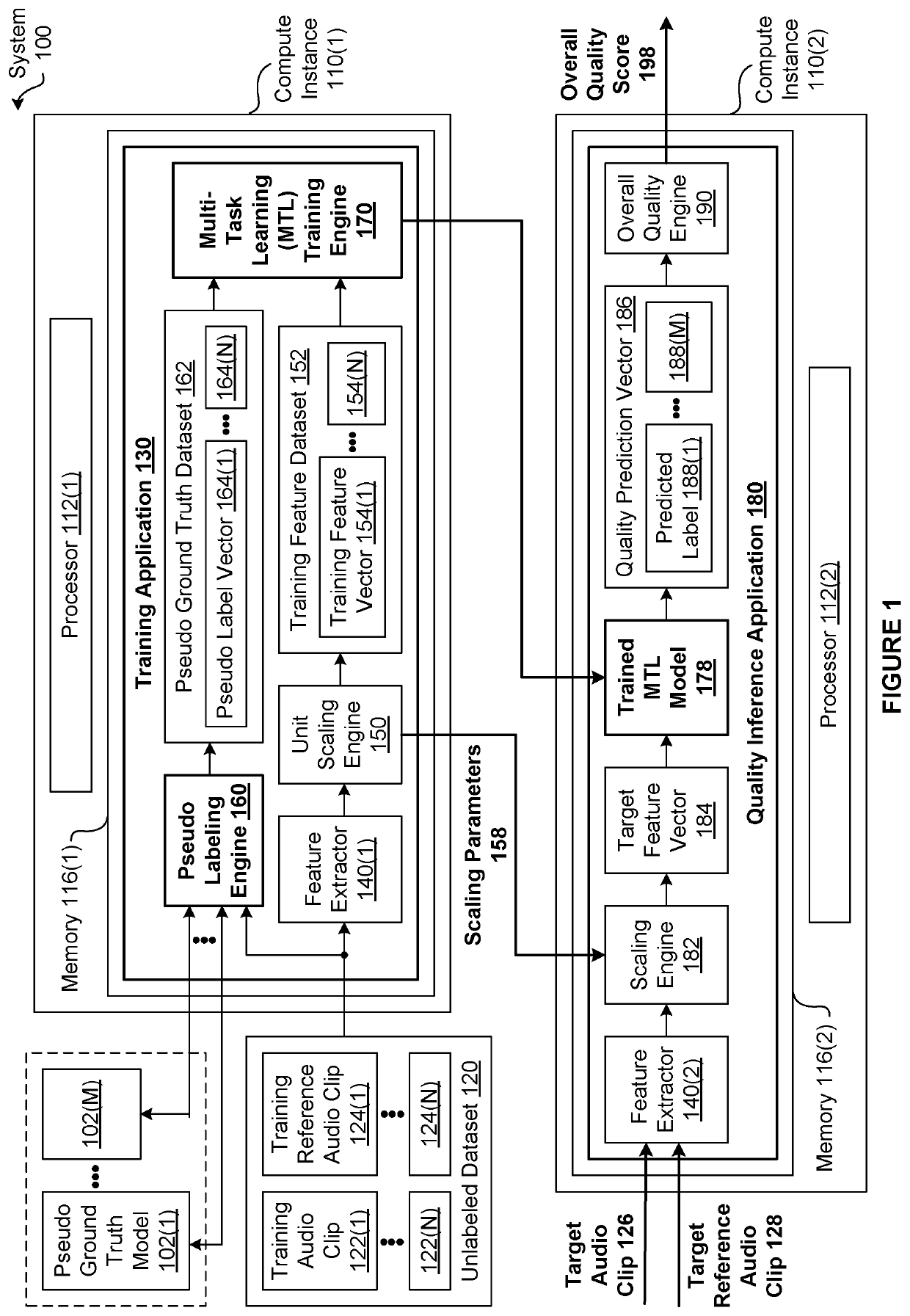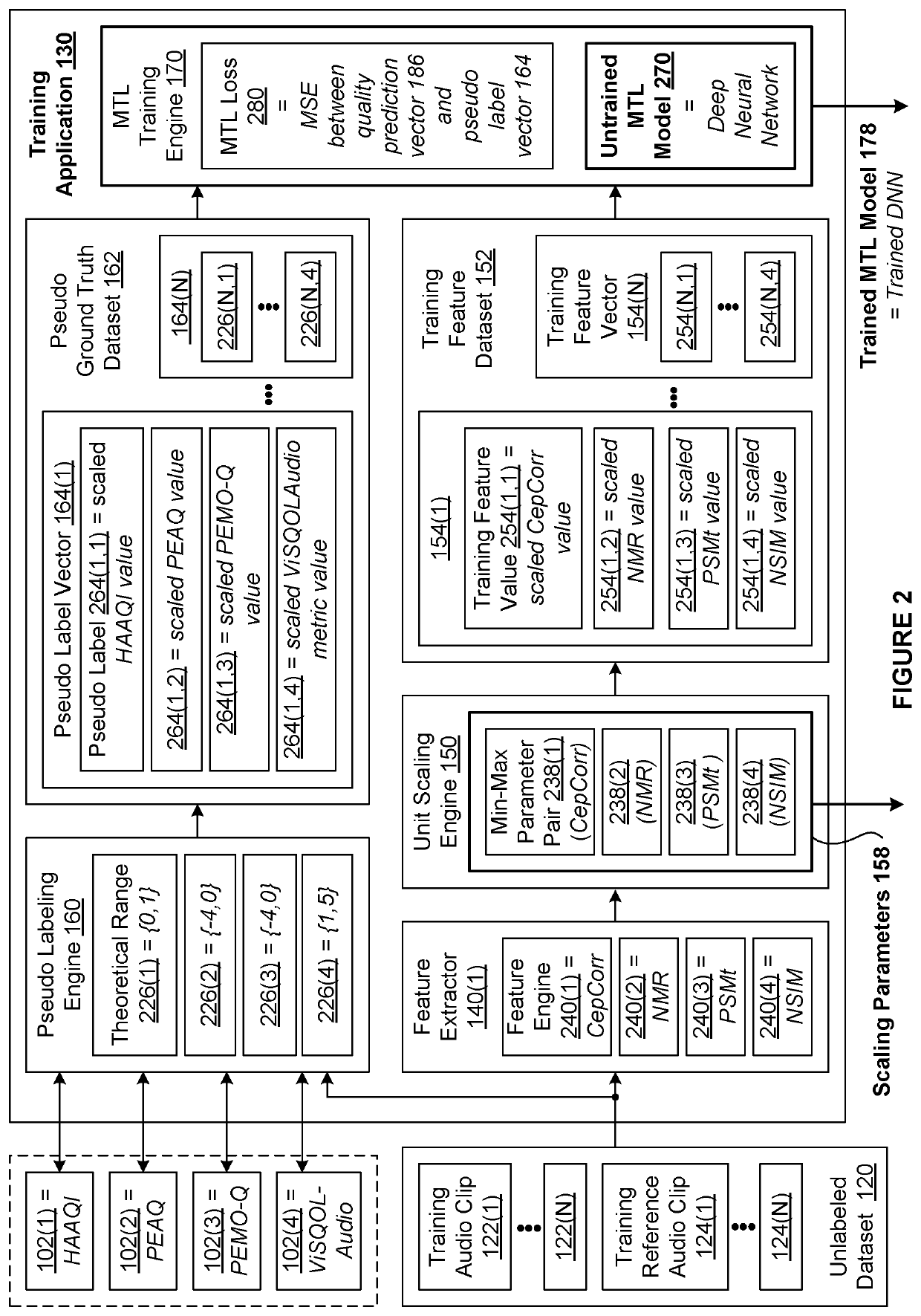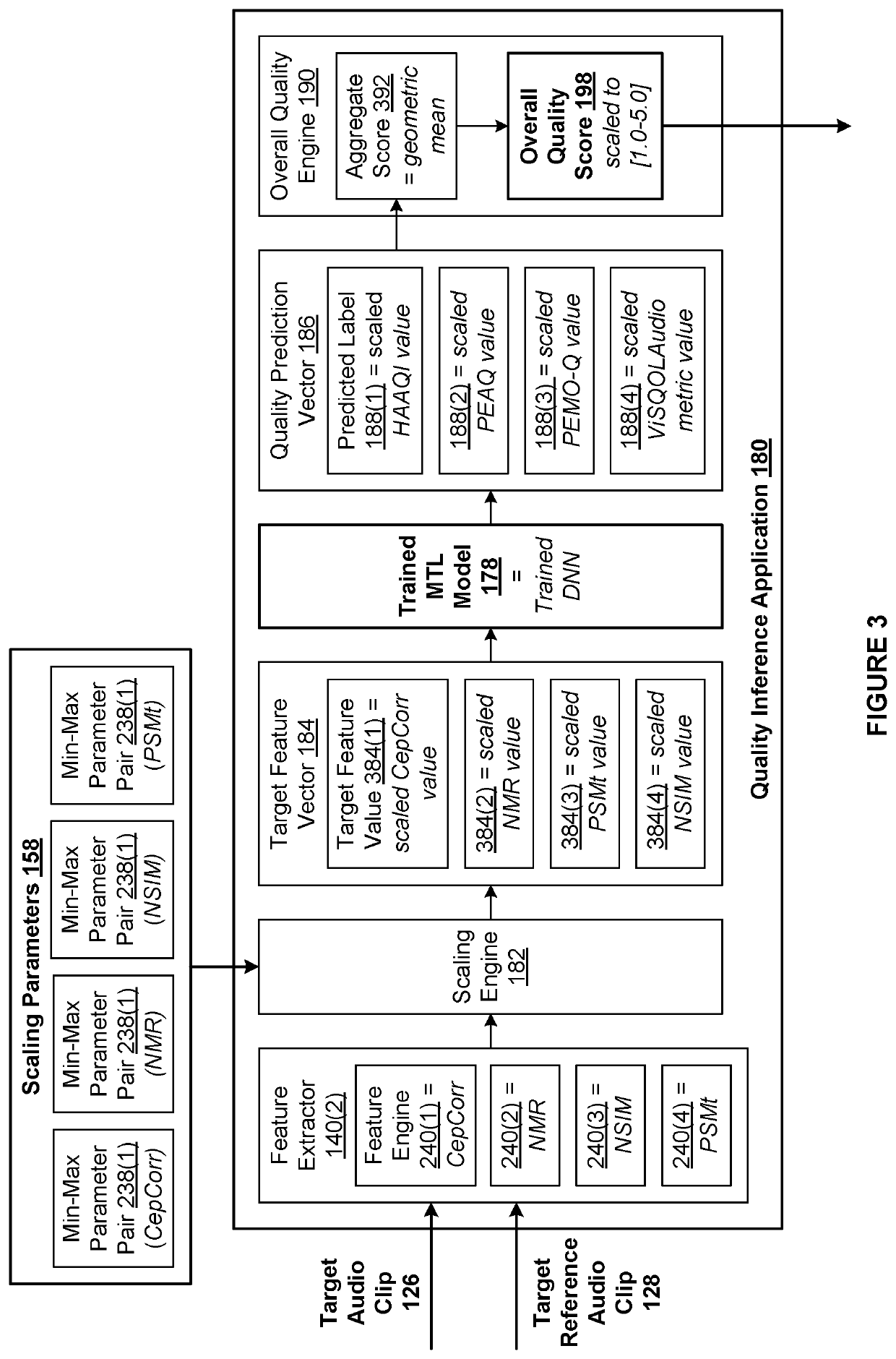Techniques for training a multitask learning model to assess perceived audio quality
a multitask learning and learning model technology, applied in the field of computer science, artificial intelligence, and audio technology, can solve the problems of inability to train efficiently, inability to reliably assess the perceived audio quality inability to reliably assess the perceived audio quality level. , to achieve the effect of accurately and reliably assessing the perceived audio quality level of audio clips, accurately and reliably estimating perceived audio quality levels, and efficient training
- Summary
- Abstract
- Description
- Claims
- Application Information
AI Technical Summary
Benefits of technology
Problems solved by technology
Method used
Image
Examples
Embodiment Construction
[0002]The various embodiments relate generally to computer science, artificial intelligence, and audio technology and, more specifically, to techniques for training a multitask learning model to assess perceived audio quality.
Description of the Related Art
[0003]Assessing the quality levels of discrete portions of audio signals known as “audio clips” is an important aspect of developing and verifying certain types of audio algorithms, such as audio coders, filtering algorithms, source separation algorithms, etc. Among other things, applying a given audio algorithm to a representative set of reference audio clips and then determining quality levels of the resulting target audio clips, as perceived by actual listeners, can provide valuable insight into the audio quality versus processing efficiency tradeoffs associated with the audio algorithm or the impact the audio algorithm has on overall perceived audio quality.
[0004]Directly determining the perceived audio quality levels of audio ...
PUM
 Login to View More
Login to View More Abstract
Description
Claims
Application Information
 Login to View More
Login to View More - R&D
- Intellectual Property
- Life Sciences
- Materials
- Tech Scout
- Unparalleled Data Quality
- Higher Quality Content
- 60% Fewer Hallucinations
Browse by: Latest US Patents, China's latest patents, Technical Efficacy Thesaurus, Application Domain, Technology Topic, Popular Technical Reports.
© 2025 PatSnap. All rights reserved.Legal|Privacy policy|Modern Slavery Act Transparency Statement|Sitemap|About US| Contact US: help@patsnap.com



